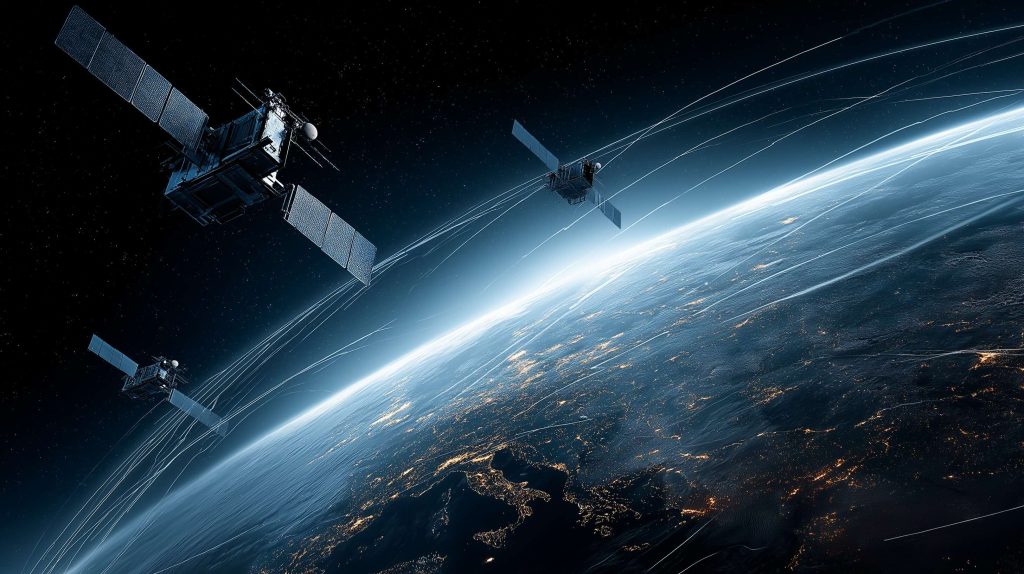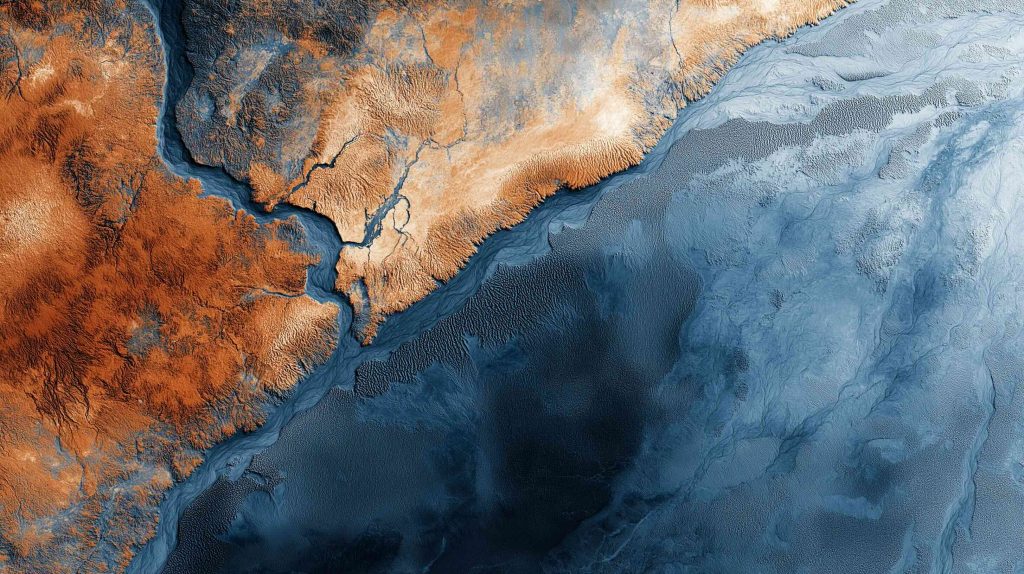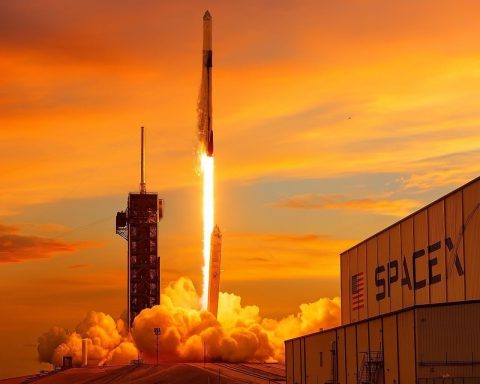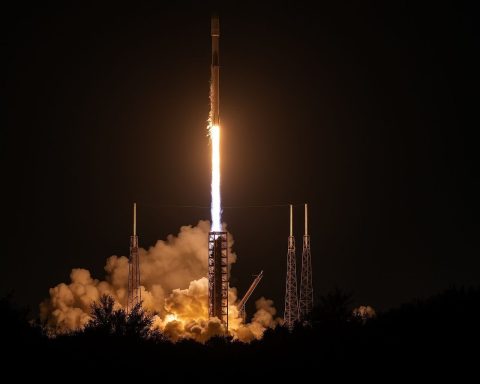- NASA released the Spot The Station mobile app in November 2023 to extend ISS flyover tracking beyond the website.
- FindStarlink.com provides Starlink sighting predictions with visibility labels (bright, average, dim) and a live map, plus free iOS/Android companion apps; it is ad-free and donations are optional.
- Orbitrack offers offline access to thousands of satellites, is a one-time purchase around $4.99, features 3D orbit visualizations and an AR Sky View, and has a Mac version for about $9.99.
- ISS Detector is a popular free Android and iOS app that can unlock a larger satellite catalog with a paid upgrade, sends alerts minutes before passes, and includes a radar path and rotator control integration.
- Heavens-Above provides an Android app (free) with a Pro upgrade, including 10-day predictions and star charts, and supports offline use.
- Satellite Tracker by Star Walk offers a catalog of over 19,000 satellites, real-time positions with AR Sky View and 3D models, and is available on iOS, Android, and Huawei devices, free with in-app purchases.
- N2YO.com covers real-time tracking of thousands of objects with current ground tracks and data such as latitude, longitude, altitude, and speed, and is free to use without login for basic tracking.
- NASA Worldview is a web-based imagery portal offering near real-time full-resolution imagery from NASA satellites, with multiple data layers and the ability to download raw data via Earthdata, and it is free.
- NOAA’s Earth in Real-Time provides live GOES and other weather satellite imagery with an interactive global weather map, offering layers like infrared and GeoColor and updates every 5–10 minutes.
- The Copernicus Data Space Ecosystem, launched in 2023, offers a browser-based viewer for Sentinel data (Sentinel-1/2/3, etc.) with Sentinel-2 imagery down to 10 meters, and EO Browser/Sentinel Playground also aggregate Landsat and MODIS data, with free access (some features may require login).
Tracking satellites has never been easier. Thanks to a range of online tools and mobile apps, anyone can follow spacecraft in real time – from the International Space Station (ISS) to SpaceX’s Starlink constellation – right from a web browser or smartphone. These satellite trackers not only show live positions on maps or in the sky, but also predict flyovers, display satellite imagery of Earth, and send alerts so you never miss a pass. In this comprehensive guide, we’ll explore the leading internet-based satellite trackers, high-resolution imagery platforms, and mobile apps that bring space tracking to your fingertips. Whether you’re an amateur astronomer hoping to spot a bright satellite, a journalist analyzing Earth observation images, or just curious about what’s orbiting above, there’s a tool for you. (And yes – many of them are free!)
Modern apps even leverage your phone’s sensors to point you in the right direction, making satellite-watching a fun activity to share. As one space expert notes, “mobile apps are ideal tools for tracking the satellites that are visible with unaided eyes. They can tell you which object you are seeing (or saw earlier), alert you just before a space station will appear in the night sky and show you exactly where to look for it” [1]. Read on for a tour of the best satellite tracking websites, imagery viewers, and apps – along with their features, uses, and any pitfalls (like privacy or cost) to keep in mind.
Real-Time Satellite Position Trackers (Web-Based)
If you’re at a computer, numerous websites provide live satellite tracking maps and pass predictions. These web-based trackers typically use public orbital data to plot where satellites are above Earth at any moment, and when they will next appear over your location. Many allow you to select any active satellite and see its current location, trajectory, and upcoming passes. For example, N2YO, a popular online tracker, invites users to “select any satellite orbiting the Earth and check where it is located now” [2] – offering a quick way to find real-time positions and even set up pass alerts. Below are some of the leading internet satellite trackers:
- Heavens-Above: A long-running favorite among satellite watchers, Heavens-Above provides customized viewing predictions and interactive sky charts. It covers everything from the ISS and Iridium flares to comets and planets. As the site’s introduction explains, “if you’re interested in satellites or astronomy, you’ve come to the right place! Our aim is to provide you with all the information you need to observe satellites… We not only provide the times of visibility, but also detailed star charts showing the satellite’s track through the heavens. All our pages, including the graphics, are generated in real-time and customized for your location and time zone.” [3] [4] In practice, you enter your location (or pick from a huge database of places) and Heavens-Above will list upcoming passes of selected satellites with timing and brightness details. The site can even generate an overhead sky map for a pass, showing the satellite’s path among the stars. (Heavens-Above is free on the web and also offers a mobile app—more on that later.)
- N2YO.com: N2YO is another powerful web tracker that covers “live real time satellite tracking” of thousands of objects. It lets you search for any satellite by name or catalog number and then shows its current ground track on an interactive map, along with data like latitude, longitude, altitude, speed, and orbital details. The tagline on N2YO’s site sums up its utility: “Select any satellite orbiting the Earth and check where it is located now. Check satellite passes over your location and receive alerts on your phone.” [5] Indeed, N2YO combines real-time visualization with prediction tools and even offers mobile notification services. It’s a go-to for quickly answering “Where is satellite X right now?” and is frequently updated with new launches. The service is free to use (supported by ads) and does not require login for basic tracking.
- NASA “Spot the Station” (Website): NASA’s Spot The Station program began as a website where users could sign up for email or text alerts of ISS flyovers. The official website provides a schedule of upcoming visible ISS passes for your city, as well as a real-time map of the ISS’s orbit. In late 2023, NASA expanded this into a dedicated mobile app (discussed later), noting that the new app “improves upon the space agency’s official ‘Spot the Station’ website, delivering added capabilities and information to expand the ISS tracking experience for both casual stargazers and NASA acolytes” [6]. Still, the website remains a handy resource to quickly see when the ISS will be overhead next, straight from the source. It’s an entirely free service by NASA, with no account needed – just select your region and city.
- Find Starlink: When SpaceX’s Starlink satellites started launching in large numbers, they created a public frenzy as “trains” of bright satellites crossing twilight skies. FindStarlink.com was created as a simple tool for people to find out when those Starlink chains might be visible. On the site, you choose your location and it lists upcoming sighting times labeled by visibility (bright, average, or dim). As the site explains, “using this site, you can find out when the Starlink satellites are expected to be visible at your location.” [7] It also offers a live map of Starlink positions. Because Starlink satellites spread out over time, the site focuses on newly launched groups and shows the lead satellite of each “chain” to indicate when the rest will follow [8]. Find Starlink has become quite popular (even earning media praise for predicting passes very soon after each launch [9]). The website is free and ad-free (the developer asks for optional donations) [10], and it now provides companion mobile apps on iOS/Android for convenience [11].
- Other Trackers: Several other web tools cater to special interests. For instance, Satellitemap.space offers a real-time interactive map of all Starlink satellites and their coverage footprint [12] – great for visualizing the growing mega-constellation. The venerable CelesTrak site, run by an orbital analyst, provides up-to-date orbital data and 2D/3D visualizations for satellites by category (like weather satellites, GPS, etc.), although it’s more technical. There are even creative visualizations like Stuff in Space, an interactive 3D globe showing all known debris and satellites orbiting Earth (a stark reminder of the crowded skies!). For hardcore satellite observers, tools like KeepTrack (a web app by an independent developer) aggregate extensive satellite databases. One user noted that KeepTrack “appears to have the most complete dataset on satellites – beating even the paid versions of… Orbitrack, Stellarium, Satellite Tracker and Star Walk 2” [13]. In short, if a satellite is up there, chances are there’s a website that can track it in real time for you.
An example of a web-based satellite tracker showing the positions of many satellites around Earth. Tools like Orbitrack’s web/desktop mode visualize low Earth orbit satellites (green dots) and even distant geosynchronous satellites (the curved ring), updating their positions in real time [14]. Such maps help illustrate how crowded our skies are, and allow users to select any dot to get that satellite’s identity and orbit path.
Satellite Imagery Platforms (Weather & Earth Observation)
Beyond tracking satellite positions, there’s another side of satellite monitoring: viewing the Earth itself from space. Weather satellites and Earth-observing missions continuously capture images of our planet, which are made available on various platforms. These satellite imagery services let users see everything from real-time cloud patterns and storms to high-resolution photos of Earth’s surface – a treasure trove for meteorologists, researchers, and the curious public. Here are some top imagery platforms:
- NASA Worldview: A flagship imagery portal by NASA’s Earth Observing System, Worldview provides an interactive map to browse global satellite images in full resolution. It features nearly daily imagery from NASA’s satellites (Terra, Aqua, Suomi-NPP, etc.), updated in near real time – usually within 3 hours of observation [15]. You can pan/zoom the world, toggle dozens of data layers (fires, air quality, storms, etc.), and even animate image sequences or compare dates. NASA touts Worldview as “a fully featured, interactive interface for browsing full-resolution imagery and downloading the underlying data via Earthdata Search” [16]. In practice, that means not only can you see a pretty satellite picture, you can also download the raw image data if you’re inclined. Worldview is free and accessible via web browser (on PC, tablet, or phone) with no login required for exploration. It’s a fantastic way to watch events like hurricanes, wildfires, or even just yesterday’s global cloud cover, from a satellite’s perspective.
- NOAA Earth in Real-Time (Satellite Maps): For real-time weather tracking, NOAA (the U.S. National Oceanic and Atmospheric Administration) offers its own interactive map of live satellite imagery from GOES (geostationary) and other operational satellites. NOAA’s “Earth in Real-Time” site delivers continuously updating views of clouds, storms, and other environmental data. As NOAA describes it, this tool “features live satellite imagery from operational weather and environmental satellites… offering an interactive global weather map made with U.S. satellite imagery – ideal for tracking clouds, following storm systems, and viewing Earth from space in stunning detail.” [17] Users can select different layers (e.g. infrared or visible imagery, composite views like GeoColor) and literally watch weather systems evolve. It’s especially useful for near real-time hurricane tracking, since GOES images update every 5–10 minutes. Like NASA’s portal, NOAA’s is free on the web. (For quick access to latest images, NOAA also has a simpler “Latest Satellite Imagery” page and regional GOES viewers [18] [19].)
- Zoom Earth: Zoom Earth is a popular public website that combines near-real-time satellite imagery with an easy-to-use interface (similar to online maps). It’s great for quickly seeing current global weather from satellites. The site advertises “near real-time global weather satellite images, updated every 10 minutes” [20]. In fact, Zoom Earth pulls in live imagery from multiple sources – GOES-East/West, Europe’s Meteosat, Japan’s Himawari – and refreshes the view every 10–15 minutes [21]. This means you can watch the progression of daylight, cloud movements, and even wildfire smoke or other phenomena almost as they happen. Zoom Earth also provides layers like live precipitation radar and forecast models, making it a hybrid weather map. It even archives daily global images back to 2000 using NASA/MODIS and others [22], so you can time-travel to past dates. The website is free (ad-supported), and recently they have released mobile apps as well [23]. For casual users who want an instant look at Earth’s current state – be it a cyclone swirling or just a sunny day in your region as seen from space – Zoom Earth is extremely handy.
- Copernicus & Sentinel Hub: The European Union’s Copernicus program offers open access to imagery from its Sentinel satellites. In 2023, ESA launched the Copernicus Data Space Ecosystem, which includes a browser-based viewer for all Sentinel-1/2/3/etc data [24] [25]. This essentially replaced the older Open Access Hub with a more user-friendly interface where you can search locations and dates for free imagery (optical and radar) at high resolution (down to 10 m for Sentinel-2). Additionally, third-party platforms like Sentinel Hub’s EO Browser and Sentinel Playground aggregate not only Sentinel data but also Landsat, MODIS, and more into one web app [26]. These allow you to apply filters, compare bands (like NDVI for vegetation), and even do some analysis on the fly. For example, EO Browser lets you easily select a location and date, view the available satellite images, and even download them in various formats [27]. While these tools are geared a bit more toward analysts and researchers, they are free to use (some require a free login for certain features) and can be an eye-opener for those wanting high-quality satellite images beyond just weather clouds.
- Other Imagery Sources: There are numerous other sources, each with a niche. For historical imagery and virtual globe exploration, Google Earth remains popular – it isn’t real-time (images can be weeks or years old), but it offers a seamless way to view high-resolution satellite and aerial shots of practically any location on Earth. Google Earth’s Pro version (also free now) even allows you to go back in time through older imagery in many places. Another resource is the USGS Earth Explorer for Landsat and other datasets (more data-download oriented). For near-live disaster monitoring, sites like NASA’s FIRMS (Fire Information for Resource Management System) map active wildfire data from satellites in near real time. And for those interested in a really live view, the ISS itself streams a live video feed of Earth – accessible on NASA’s website or apps (with occasional downtime when the ISS is on the night side or switching cameras). In short, if there’s something happening on Earth, there’s likely a satellite watching it, and a platform where you can see the imagery, often within hours of it being taken.
Mobile Apps for Satellite Tracking
Smartphones have revolutionized satellite tracking for everyday users. With your phone’s GPS, compass, gyroscope, and camera, apps can guide you to spot satellites by simply holding your device up to the sky. Many apps will buzz you when the ISS is about to rise, show a live pointer for where to look, or even overlay satellite paths on your camera view (augmented reality). There is a rich selection of satellite tracking apps on both iOS and Android – some focused on specific satellites like the ISS, and others cataloging thousands of objects. Here we highlight some of the top-rated and most capable mobile apps:
- Orbitrack: Designed by the developers of the renowned SkySafari astronomy app, Orbitrack is often hailed as one of the most powerful satellite tracking apps available. “The Orbitrack app, available for Apple and Android devices, is the most powerful and comprehensive satellite tracking app I’ve found,” writes one space journalist [28]. Orbitrack includes every active orbiting satellite and even sizable space junk, with a database of thousands of objects stored offline on your device [29]. This means it can work without a live internet connection (useful for field observing) and updates orbital data daily from sources like CelesTrak [30]. The app’s features are rich: you can search satellites by categories (e.g. bright satellites, weather satellites, ISS, Starlink, etc.) [31], view 3D interactive visualizations of orbits, see a sky chart or “augmented reality Sky View” showing satellites over your actual sky, and even get detailed mission info and images for many satellites [32] [33]. Orbitrack can send alerts for passes and includes voice-controlled VR modesfor an immersive experience [34] [35]. Impressively, it even lists amateur radio satellite frequencies for ham operators [36]. All this comes for a one-time purchase (no subscription) – “everything is included for an inexpensive, one-time purchase price” [37], according to its developers. (At last check, Orbitrack costs around $4.99 on app stores.) Orbitrack is available on iOS, Android, and even Macdesktops, making it quite unique in cross-platform support [38].
- ISS Detector: If your interest is mainly in catching the International Space Station (and a few other bright satellites), ISS Detector is a hugely popular app that’s simple to use. It’s available free for Android and iOS, with millions of downloads. The free version focuses on the ISS and sends you notifications a few minutes before a visible pass. The interface is beginner-friendly: a list of upcoming passes, each rated with an eye icon (scaled to show pass quality/brightness) [39], and a “radar” screen that shows the path of the ISS and guides you where to look by pointing your phone [40]. One enthusiastic user explains, “I like using ISS Detector. It has tons of satellites, uplink and downlink frequencies, allows notifications, can sync with calendars, has a good amount of info on each sat, [and] a decent amount of settings to tweak… The UI is easy to read and get around” [41]. Beyond the ISS, an affordable upgrade unlocks tracking for dozens of other objects – “an inexpensive extension pack will track a great many satellites, planets, and even comets” [42]. According to a user, all the extensions together cost only a few dollars (under $5) as a one-time purchase [43], which also removes ads. Many appreciate that pricing model: “Price is well worth it,” notes the same user [44]. ISS Detector also integrates some unique perks, like live ISS video streaming from NASA right in the app [45], and even the ability to interface with radio antenna rotators or telescopes for automated tracking [46]. It’s a personal favorite of many skywatchers and has arguably one of the best pass prediction UIs for quick use.
- Heavens-Above (App): The Heavens-Above website’s functionality is also available in a mobile app (Android, with a Pro version upgrade). The app brings the same extensive data – passes of ISS and other satellites, astronomy charts, etc. – to your phone with offline capability. Users praise its thoroughness: “I use Heavens Above Pro. The free version is nice, too. The app offers so much information. I highly recommend checking it out.” [47] Like the site, it can list 10-day predictions for selected satellites and show star charts for each pass. The Pro version (a few dollars) mainly removes ads and supports the developer. While the interface is more utilitarian than flashy, serious observers enjoy having a one-stop app for virtually everything in the sky – not just satellites but also planets, comets, and more – all in one place, tailored to their location.
- Satellite Tracker (by Star Walk/Vito Technology): For a more visual, AR-based experience, Satellite Tracker(also known as “Satellite Tracker by Star Walk”) is a free mobile app that has attracted a wide audience. This app emphasizes showing you where to look in the sky in real time. According to the developer, “Satellite Tracker is a powerful free application that will help you observe artificial satellites, like Starlink and the ISS, crossing the night sky. It can show the exact position of any satellite above the Earth and send notifications when the satellite you’re interested in will be passing over your location. The built-in ‘Sky view’ feature allows you to point your device at the sky to see the satellite’s movement and position in real-time.” [48] In other words, it’s very much about the interactive experience – hold up your phone and watch the ISS or another satellite glide across your screen, aligned with the real stars. The app claims a catalog of 19,000+ satellites to choose from, with options to zoom into 3D models of satellites and see their ground track on Earth [49]. Users have left glowing feedback about the excitement it brings: “My family LOVES this app… We track the satellites and are always happy when an alert goes off. ISS is their favorite because they don’t need a telescope to catch a glimpse. Definitely recommend.” [50] wrote one user, while another said “The coolest app ever if you love the sky… I got to see the International Space Station last week cross over my house… I definitely recommend this app to anyone who loves the night sky and just might see a satellite go by!” [51]. Such reviews underscore how these apps can spark joy and learning for all ages. Satellite Tracker is available on iOS, Android, and Huawei devices, and is free with optional in-app purchases (the developer monetizes via ads and an ad-free premium upgrade).
- Other Notable Apps: There are plenty more apps to explore. SkySafari 7 (iOS/Android), primarily a stargazing app, includes an extensive satellite database and can show satellite paths in the sky – it’s a paid app geared toward serious astronomers [52] [53]. Stellarium Mobile (available free on Android and a Plus version on iOS) also incorporates satellites; it even has a cool 3D view that lets you orbit alongside a satellite for a virtual look [54] [55]. Star Walk 2, a popular star chart app, shows ISS and some satellites in its augmented reality sky view as well. For those specifically interested in Starlink satellites, the Find Starlink app (mentioned earlier) provides alerts for Starlink passes in a simple interface [56]. And newly, NASA’s official Spot The Station mobile app (released in Nov 2023) is a must-have for ISS fans: it’s free and features an AR view with a compass pointer to the ISS, plus the ability to submit your sightings. “An augmented reality interface makes it easier for users to locate the [ISS] and provides options for capturing and sharing pictures of their sightings in real time… the app’s built-in compass will show you where the space station is – even if you’re on the other side of the globe,” NASA says about the app [57]. Being an official app, its code is even open-source for transparency [58]. In short, whether you want a fully loaded professional tool or a fun free app to get started, there’s no shortage of options on mobile.
Mobile apps now offer augmented reality views to help users spot satellites. For example, NASA’s new “Spot the Station” app uses your phone’s camera and compass to overlay the ISS’s position on the sky, guiding you where to look [59]. Many apps provide a similar AR feature – simply point your phone upward and an icon shows the satellite’s path among the stars.
Use Cases: Who Benefits from Satellite Tracking?
Why track satellites? Different people have different motivations, and these tools cater to many interests:
- Amateur Astronomers & Hobbyists: For stargazers, seeing a bright satellite like the ISS arc across the night sky is a thrill. These folks use trackers to plan observation sessions and share the experience with others. Apps with AR and alerts are especially useful for star parties or impromptu viewings – as one commentator noted, the best apps “utilize your device’s compass and gyroscope to guide you where to look in the sky for satellites — a necessity when sharing the fun of satellite-watching with friends and family, or at star parties” [60]. Hobbyists also chase flares (such as those once produced by Iridium satellites) and passes of famous craft like the Hubble Space Telescope or China’s Tiangong station. With trackers, they can time photography attempts (astrophotographers often try to capture the ISS transiting in front of the Moon or Sun, for instance). In essence, these tools enrich amateur astronomy by adding satellites to the roster of celestial targets.
- Educators and Students: Teachers increasingly use satellite tracking in educational activities. For example, a science teacher might have students track the ISS and calculate its orbit period, or follow weather satellite images to learn about cloud systems. The ISS Live video feed and Earth imagery can spark discussions about geography and climate. Being able to see real satellites fosters a tangible connection to STEM topics like space exploration, orbital mechanics, and Earth science. Many of the apps and sites we discussed are quite kid-friendly and visual, making them excellent for getting young people interested in space (a child excitedly watching an app’s alert to run outside and spot the ISS is not an uncommon scenario!). NASA’s Spot The Station and other outreach-focused tools are explicitly aimed at public engagement.
- Journalists and Investigators: On the more serious side, satellite imagery has become a powerful tool for investigative journalism and humanitarian monitoring. Reporters now regularly use free satellite images to verify events on the ground – from confirming the destruction in a conflict zone to exposing environmental crimes. “Satellites are a powerful investigative tool. Journalists are mining satellite imagery and remote sensing data to expose a widening array of problems: tree loss and forest fires, pandemic risk and climate change, slavery, and mass incarceration,” notes the Global Investigative Journalism Network [61]. The availability of timely imagery via platforms like Worldview, Sentinel Hub, or Planet’s services allows journalists and OSINT (open-source intelligence) researchers to track changes almost in real time. For example, when a natural disaster strikes, journalists can grab before-and-after satellite images to document the damage. Or when a government denies an action, analysts can often find satellite proof (as seen in the use of Maxar and Planet imagery during conflicts). The tools mentioned in this report empower investigators by making such data accessible without requiring a PhD in remote sensing – often, it’s as easy as navigating a web map and taking a screenshot of the evidence.
- Scientists and Researchers: Naturally, professionals in environmental science, astronomy, and aerospace rely on satellite tracking as part of their work. Astronomers and satellite operators use trackers to know when certain satellites (or space debris) will be overhead – important for scheduling observations or even avoiding collisions. (In fact, organizations use more sophisticated versions of these tools to do “space traffic management.”) Earth scientists use the imagery platforms to monitor climate indicators like polar ice extent, forest cover, or ocean color on a daily basis. Climate researchers, for instance, might use NASA Worldview’s trove of data layers to study phenomena in near real time and then retrieve the raw data for analysis. Even hobbyist weather trackers use these tools to follow hurricane developments or track wildfire smoke spread. In summary, the same apps and sites that let a casual user admire a pretty Earth image are being used by experts to generate new insights about our planet.
- General Public & Enthusiasts: Let’s not forget the casual user who is simply curious. The idea that you can see a spaceship flying overhead with your naked eyes is inherently exciting – and millions of people have used ISS-alert apps or Starlink trackers for exactly that thrill. It’s become almost a communal activity: during a big space station pass or a Starlink “train” sighting shortly after launch, social media lights up with people exclaiming that they saw it, often thanks to having an app that told them when to look. As one user review said after spotting the ISS via an app, “that’s something you don’t see every day! … I definitely recommend this app to anyone who loves the night sky” [62]. There’s also a growing interest in satellites because of topics like UFO sightings (which often turn out to be Starlink or other satellites), light pollution from satellite megaconstellations, and simply a desire to feel connected to the space age. Satellite trackers provide a direct way for the public to engage with space activities – for example, watching in real time as a SpaceX Dragon capsule approaches the ISS (you can track both on a map), or following the path of a newly launched satellite. In a sense, these tools turn the abstract concept of “satellites up there” into a tangible, observable reality for everyone.
Key Features and Differences Among Tracking Tools
Not all satellite trackers are alike. Here are some of the technical features and distinctions to consider when choosing a tool:
- Tracking Modes – Map vs. Sky View: Web trackers typically show a map view – the satellite’s ground track on a world map. Some (like NASA’s or N2YO) use a 2D map, while others like stuffin.space or Orbitrack provide a 3D Earth visualization. Mobile apps often include a sky view or AR mode, which shows where the satellite will appear in your local sky (augmented reality overlay or a planetarium-style display). The best apps, like Orbitrack, actually offer multiple modes: “Sky View, Orbit View, Satellite View, and Ground View,” each giving a different perspective [63]. By contrast, a simpler tool might only list pass times or show a basic map. Consider whether you want a guided sky experience (go for an AR-enabled mobile app) or just to see orbit paths (web map might suffice).
- Database Size and Focus: Some trackers are comprehensive, including virtually every cataloged object (Orbitrack’s thousands of satellites [64], Heavens-Above’s extensive list, etc.). Others focus on popular targets – e.g., ISS Detector by default only shows a curated set (ISS, visible planets, maybe Hubble) unless you expand it, and Find Starlink specifically filters to Starlink chains [65]. If you have a particular satellite in mind (say you want to track a specific NOAA weather satellite or an amateur radio CubeSat), ensure the tool lets you access it. Orbitrack’s search and CelesTrak integration shine here [66], whereas some basic apps might not include lesser-known satellites at all. On the flip side, having every satellite can be overwhelming, so many apps highlight a “favorites” list of bright or notable objects.
- Augmented Reality (AR) Capability: A major differentiator for mobile apps is AR. Apps like Satellite Tracker, ISS Detector, Orbitrack, and NASA’s Spot The Station use your camera/compass to superimpose satellite positions on the real sky [67]. This is fantastic for beginners and outreach, as you can literally see where to look. Not all apps have this – for example, the Heavens-Above app and some older ones might just use a flat sky map without camera integration. If you want that “Pokemon Go but for satellites” vibe, choose an app explicitly mentioning AR or a “Live Sky” mode. (Keep in mind you’ll need a device with the proper sensors.)
- Offline Use and Data Updates: Consider whether the tracker needs internet connectivity. Websites obviously do. Some mobile apps (e.g., ISS Detector, Satellite Tracker) will update orbital data from the internet and might not function fully offline. Others like Orbitrack store elements locally and can run without a connection [68] – useful for field use in remote areas. Orbital data (TLEs) slowly go out of date, so apps should update them regularly. Most do this automatically or let you refresh manually [69]. If you plan to use a tool offline for a while (say on a camping trip), sync it beforehand. Also, note that NASA and others update TLEs for ISS multiple times a day due to maneuvers, so up-to-date data helps accuracy. Orbitrack fetching daily updates from N2YO/CelesTrak [70] is a good example of keeping current.
- Notifications and Alerts: One of the biggest practical advantages of apps is the alert feature – it will notify you at a set time before a pass. ISS Detector allows anywhere from 1 minute to 1 hour advance notice and even silent hours settings [71]. NASA’s app similarly notifies based on your exact location [72]. These alerts ensure you don’t forget that 6 AM ISS pass you wanted to catch! Web trackers generally don’t have push notifications (aside from email alert services). So if you want proactive alerts, go with a mobile app. Check if the app lets you filter which satellites you get notified for (ISS Detector does, so you aren’t woken up for irrelevant passes [73]). Some apps can also add events to your calendar automatically [74], which is a neat integration.
- Visualization and Graphics: The polish of graphics varies. Some tools like SkySafari/SkyWalk or Orbitrack have beautiful space views with 3D satellite models, atmospheric effects, and city lights on Earth [75]. Others are more minimal or cartoonish. This doesn’t affect function, but for those who appreciate aesthetics (or want to use the app for presentations), it’s something to note. Satellite Tracker (Star Walk) for instance highlights its “detailed 3D models” and how you can “zoom in and out” on them in AR [76]. In contrast, Heavens-Above’s app is utilitarian with simple icons. Both get the job done; it’s personal preference.
- Extra Features – Comets, Ham Radio, Telescopes, etc.: Some satellite tracker apps double as general astronomy apps. ISS Detector’s expansions cover not just satellites but also comets and planets [77]. SkySafari and Stellarium are full planetariums with satellite overlays [78] [79]. If you’re interested in ham radio satellites, look for features like listing radio frequencies or rig control – Orbitrack and Heavens-Above (and specialized ham apps like AMSAT Droid) cater to this [80]. A few apps even interface with telescope mounts or antenna rotators (ISS Detector’s rotator support [81], or apps that output tracking data via network). These are niche capabilities but important for advanced users. Finally, consider the community and support: Heavens-Above has a strong community (and even a Reddit forum) for help [82], and open-source projects have transparency, whereas some apps by small developers might not have much documentation beyond an FAQ.
In summary, the “best” tool depends on your needs. If you want a quick, no-fuss alert to see the ISS tonight, a free app like ISS Detector or NASA’s Spot The Station is perfect. If you’re a data nerd wanting to explore orbits and see every satellite out there, an app like Orbitrack or a website like N2YO/KeepTrack will give you endless exploration. And if you need detailed Earth imagery, head to the NASA/NOAA portals. Many enthusiasts actually use multiple tools – e.g., getting an alert from one app, then using a website to watch the ground track, and later pulling up imagery of something interesting the satellite might have seen!
Privacy and Data Considerations
When using satellite trackers and imagery services, there are a few privacy and data aspects to keep in mind – for both the user’s data and the data these tools provide:
- Location Access: Most mobile tracking apps will ask for your location or at least require you to input one. This is necessary to compute overhead passes and visibility. If you’re privacy-conscious about GPS, you can often enter a generic location (e.g., your city or coordinates manually) instead of letting the app pinpoint you. The apps typically don’t need continuous background location (except when actively looking during a pass). Check the app’s privacy policy: for instance, the App Store listing for Satellite Tracker notes the developer “indicated that the app’s privacy practices may include handling of data” in certain ways [83], which usually means they might use coarse location or usage analytics. Generally, reputable apps like those mentioned do not share your personal data beyond standard analytics/ads, but it’s good to be aware that a free app with ads might be collecting some identifiers for advertising. If that bothers you, opt for a paid version or an app from an organization like NASA (NASA’s app is open-source, meaning anyone can inspect its code for privacy compliance [84]).
- Ads and In-App Tracking: Many free satellite apps are ad-supported. This can introduce trackers (the digital kind) that monitor app usage to serve ads. Find Starlink notably prides itself on being ad-free (sustained by donations) [85], which is a privacy plus. Heavens-Above’s free app has ads but the paid Pro removes them. ISS Detector’s free version includes ads as well, which disappear with the $3 upgrade [86]. If you prefer not to have any advertising/third-party trackers, investing a few dollars in a Pro version is often worth it. On websites, tools like N2YO or Heavens-Above might use Google Analytics or show ads, so the usual web privacy considerations apply (using a tracker blocker or just being aware of data collected via cookies).
- Satellite Imagery and Personal Privacy: A common question is whether these live satellite imagery sites invade privacy – e.g., “Can I see a person or my house in real time from a satellite?” The answer is no, at least not with the public tools. The imagery sources we discussed (NASA, NOAA, etc.) have spatial resolutions ranging from a few kilometers to maybe 10 meters at best in near-real-time. You cannot zoom in on someone’s backyard live. High-resolution commercial imaging satellites (like those from Maxar) can see cars and buildings clearly, but those images are not live-streamed – they’re usually released later and often for purchase or through specific events. Even services that offer high-res images (Google Earth, for example) use images that are days or months old for a given location. So, privacy of individuals on the ground is generally preserved in these public platforms. In fact, agencies like NOAA and NASA often delay or withhold super high-res or sensitive imagery for security and privacy reasons. NASA Worldview’s near-real-time images, for example, are moderate resolution and mainly for environmental monitoring, not spying on people. Thus, while satellites themselves raise broader privacy debates, the tools in this guide don’t enable any personal surveillance.
- Data Sharing and Account Requirements: Most of the tracking tools do not require you to create an account. An exception might be if you use certain features on imagery sites (for instance, downloading large data sets from NASA Earthdata requires a free login). Creating an account with NASA Earthdata is straightforward and NASA does not use the info for anything nefarious – it’s just to manage download loads. The mobile apps don’t typically have user accounts (Spot The Station might have an optional sign-in if you want to sync preferences, but not mandatory). This is good from a privacy standpoint – less personal data stored. However, if you use email alert services (like the original Spot The Station email signup), you are sharing your email and phone with NASA’s service (which has its own privacy policy but is generally safe and non-commercial). Always use discretion if you stumble on third-party sites asking for personal info in exchange for satellite data – the reputable ones we list won’t ask for more than a location or perhaps an email for optional alerts.
- Open Source and Transparency: It’s worth noting that some satellite tracking projects are open-source, meaning their code is public. This can be a plus for transparency and security. For example, NASA made the Spot The Station app code open so developers can inspect or even improve it [87]. Open-source web projects like the stuffin.space visualizer are on GitHub. While most users won’t dive into code, the fact that a tool is open-source can imply a community of trust around it (and at least you know there aren’t hidden functions like secretly scraping your contacts).
In summary, using these satellite trackers is low-risk from a privacy perspective as long as you stick to the known apps and sites. You’re mostly consuming publicly available data. The biggest “data” issue you might encounter is actually the bandwidth needed to load imagery or 3D graphics – some of the Earth images or orbit visualizations can be data-heavy, so be cautious on limited mobile plans. But that’s a technical concern, not a privacy one. All things considered, the awe and knowledge gained from tracking satellites far outweigh these minor considerations, and with a bit of common sense (e.g., granting location only when needed, knowing what you share), you can gaze upwards worry-free.
Availability, Pricing, and Platform Compatibility
Finally, let’s summarize the practical info on how to get these tools, what they run on, and what they cost:
- Web Trackers: The websites mentioned (Heavens-Above, N2YO, Find Starlink, NASA/NOAA portals, etc.) run on any modern web browser. They are all free to use. Some, like Heavens-Above, offer optional donations or premium plans for extra data (Heavens-Above once had a subscription for advanced predictions, but for most users the free version is sufficient). Generally, if you have internet access and a browser, you can use these sites on desktop or mobile web. No installation needed. Just be aware some heavy visualization pages might work best on a computer or tablet rather than a small phone.
- NASA and Government Apps: NASA’s Spot The Station app is free on iOS and Android [88]. NASA also has other related apps (e.g., NASA app, NASA Eyes) which are free. ESA’s new Data Space web portal is free; if they release apps, those would be free too. NOAA’s weather imagery is via web only (free). Because these are government-funded, there’s no cost to the end user, and no ads.
- Mobile Apps (Third-Party): Pricing ranges from free to a few dollars:
- ISS Detector: Free download on Android (Google Play) and on iOS. The Android version offers in-app purchases (around $2–$3 each, or $4–$5 for a bundle) to add satellite categories and remove ads [89] [90]. The iOS version launched more recently and might come as a single paid app or similar freemium model (currently, sources indicate it’s free with an in-app purchase). Platform compatibility: Android 5.0+ and iOS 11+ roughly.
- Orbitrack: Paid app on both iOS App Store and Google Play. It’s a one-time purchase (approximately $4.99 – prices can vary by region) [91]. No further in-app purchases, and no ads. There is also a Mac version on the Mac App Store for around $9.99. Orbitrack requires iOS 10 or later / Android 6.0 or later, and benefits from a decent processor for the 3D graphics.
- Heavens-Above: Free on Android. There is a “Pro” version available as a separate paid app (~$3.99) that removes ads and might have minor feature perks. No iOS version (iPhone users can just use the mobile website or other apps).
- Satellite Tracker (Star Walk): Free on both iOS and Android, supported by ads. Offers in-app purchases (such as an ad-free upgrade or perhaps satellite packs). It’s also on Huawei’s AppGallery. This app runs on a wide range of devices (pretty lightweight).
- SkySafari / SkySafari Pro: Available on iOS/Android, these range from $2.99 for basic to $49.99 for the Pro version (which is a full-fledged astronomy suite). Satellites are included even in the basic version, but the Pro has a larger database. Only worth buying if you also want the deep sky and telescope control features. Compatibility: iOS 13+/Android 7+ for recent versions.
- Stellarium Mobile: There’s Stellarium Mobile FREE (Android) and Stellarium Plus ($9.99 on iOS, and subscription options on Android). The free version has limited satellite data, the paid unlocks more. Works on most devices.
- Find Starlink: Free on iOS and Android. The developer doesn’t charge; they provide a donation link. Minimal permissions (just location). Should work on most phones, very small app.
- Other specialty apps: Satellite Chase (AR app on iOS), Look4Sat (Android, open-source on F-Droid as well), etc., are usually free or under $5. If you’re an enthusiast, you might try multiple free ones to see which interface you prefer, then maybe buy one premium app for the long term.
In terms of platform compatibility, the good news is between web and mobile, every major platform is covered. iPhone users have slightly fewer choices (since some Android favorites like Heavens-Above and the full ISS Detector were Android-first). However, iOS now has ISS Detector and of course NASA’s app, Orbitrack, Star Walk’s app, etc. Android users arguably have the widest selection (and can even sideload open-source apps like “Satellite Assistant”). If you’re using a PC and want an installable program, there are classic options like Orbitron or GPredict (free desktop programs for Windows/Linux) for hardcore tracking, but these lack the ease of modern UI. Most people will find a combination of a web browser and a smartphone app covers all needs.
Pricing summary: You can do almost everything without spending a cent (using free apps or websites). If you opt for a paid app or upgrade, you’re looking at a modest one-time cost (on the order of a coffee or two) – no expensive subscriptions required in this niche (so far). For instance, one user noted paying under $5 to unlock all features in ISS Detector and considered it a bargain [92]. Orbitrack’s under $5 price for everything included is also seen as very fair for the depth provided [93]. Thus, budget is hardly a barrier to entry for satellite tracking.
In conclusion, the world of satellite trackers and imagery platforms opens up a new window on our world – both the world above us and the world below as seen from space. With real-time trackers, you can know when the ISS or a dazzling satellite will fly by and share that moment with others. With Earth observation tools, you can watch our planet’s dynamic systems unfold each day. And with mobile apps, you carry a personal space radar in your pocket, ready to augment your reality with the movements of man-made stars. As satellites continue to proliferate (tens of thousands of Starlinks, anyone?), these tools will only become more relevant for keeping tabs on what’s overhead. The ISS, for one, still inspires awe – “even after 23 years of continuous human presence aboard the International Space Station, it’s incredibly exciting to see the station when you look up,” as a NASA official put it [94]. Thanks to the trackers we’ve discussed, that excitement is accessible to all of us. So, pick a tool, look up… and happy satellite hunting!
Sources: The information and quotes in this report were drawn from official websites, expert reviews, and user feedback, including NASA and NOAA websites [95] [96], space journalism on Space.com [97] [98], developer descriptions (Southern Stars, Vito Technology) [99] [100], and community discussions on Reddit and other forums [101] [102]. These sources are cited in-text with the notation 【†】 for reference. Each cited link provides further reading and verification for the statements made.
References
1. www.space.com, 2. diysolarforum.com, 3. dimka.com, 4. dimka.com, 5. diysolarforum.com, 6. www.space.com, 7. findstarlink.com, 8. findstarlink.com, 9. www.facebook.com, 10. findstarlink.com, 11. findstarlink.com, 12. satellitemap.space, 13. www.reddit.com, 14. www.space.com, 15. eos.com, 16. firms.modaps.eosdis.nasa.gov, 17. www.nesdis.noaa.gov, 18. www.star.nesdis.noaa.gov, 19. www.star.nesdis.noaa.gov, 20. zoom.earth, 21. eos.com, 22. eos.com, 23. apps.apple.com, 24. eos.com, 25. eos.com, 26. eos.com, 27. eos.com, 28. www.space.com, 29. www.space.com, 30. southernstars.com, 31. www.space.com, 32. www.space.com, 33. southernstars.com, 34. southernstars.com, 35. southernstars.com, 36. southernstars.com, 37. www.space.com, 38. southernstars.com, 39. www.space.com, 40. www.space.com, 41. www.reddit.com, 42. www.space.com, 43. www.reddit.com, 44. www.reddit.com, 45. www.space.com, 46. www.space.com, 47. www.reddit.com, 48. vitotechnology.com, 49. vitotechnology.com, 50. vitotechnology.com, 51. vitotechnology.com, 52. www.space.com, 53. www.space.com, 54. www.space.com, 55. www.space.com, 56. findstarlink.com, 57. www.space.com, 58. www.space.com, 59. www.space.com, 60. www.space.com, 61. gijn.org, 62. vitotechnology.com, 63. www.space.com, 64. southernstars.com, 65. findstarlink.com, 66. www.space.com, 67. www.space.com, 68. www.space.com, 69. www.space.com, 70. southernstars.com, 71. www.space.com, 72. www.space.com, 73. www.space.com, 74. www.reddit.com, 75. southernstars.com, 76. vitotechnology.com, 77. www.space.com, 78. www.space.com, 79. www.space.com, 80. southernstars.com, 81. www.space.com, 82. heavens-above.com, 83. apps.apple.com, 84. www.space.com, 85. findstarlink.com, 86. www.reddit.com, 87. www.space.com, 88. www.space.com, 89. www.reddit.com, 90. www.space.com, 91. www.space.com, 92. www.reddit.com, 93. www.space.com, 94. www.space.com, 95. firms.modaps.eosdis.nasa.gov, 96. www.nesdis.noaa.gov, 97. www.space.com, 98. www.space.com, 99. southernstars.com, 100. vitotechnology.com, 101. www.reddit.com, 102. www.reddit.com









